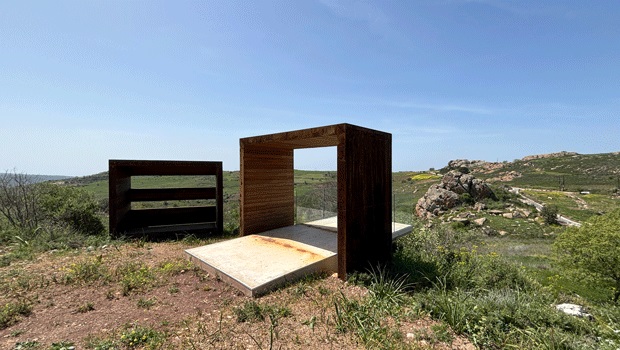Filenews 17 February 2025 - by Dora Christodoulou
An area of unique natural beauty in Ineia, overlooking the coastline of Akamas, was in a bad condition for decades. This situation has now changed, following the creation of the thematic route "Aphrodite" launched a year ago by the President of Democracy, Nikos Christodoulides. Since then, this thematic route has caused so much impression and admiration across Europe that it is now a candidate for a relative pan-European distinction, while it is already included in the programs of tour operators in Europe as one of the strong cards of the destination Paphos for the 2025 packages.
Speaking to "F" about the route from the almost ruined points of interest to today's nomination and candidate award of the project, architect Yiannis Agisilaou, a member of the team that prepared the architectural study for the project and in which architects G. Kalavas and L. Loizou still participate, stressed that it is a road of about two kilometers, which starts from the western outskirts of Ineia and ends at the geomorphs (rock complexes) of "Koraki" and "Alykou", with panoramic views of Lara Bay and Akamas.

Part of the road was asphalted, while most of it was paved with concrete, explains Mr. Agisilaou. Both asphalt and concrete were in very bad condition and had to be maintained or replaced. The dry-stone walls on either side of the road had collapsed for the most part and the road was becoming relatively rough. At the same time, along the route there were points of archaeological, cultural and environmental interest, such as fountains, a lake, chapels, landforms, argaki.
The aim of the intervention, explains one of the designers of the project, was on the one hand to upgrade the road, which was in a very bad condition and, on the other hand, which was the main issue, to connect the environmental and historical points of interest that meet on the route. The interest shifts from the car to the service of the sightseeing hiking visitor.
Basic design principles that were set from the beginning, he stresses, were for the route to become an organic element of the whole configuration and to maintain the existing relationship with the topography and landscape, to conserve/restore the dry-stone walls on both sides of the road, any new constructions to become part of the landscape and to be organically integrated into it, and the use of local flora in terms of new plantings to enrich the greenery.
The particular elements of the surrounding area and the boundaries on either side of the road, such as rocks, trees and dry-stone walls, says Yiannis Agisilaou, remain but also emerge, and the road/route adapts accordingly to the natural elements and natural "obstacles". A significant percentage of the pre-existing dry-stone walls is maintained or reconstructed, it emphasizes, individual points of interest are identified and highlighted or new uses are included to serve the visitor.
Specifying these new uses and benefits, he refers to an Information and Information Centre for the settlement and the route, the landscaping of the two 12th century chapels located on the route, their restoration by the Department of Antiquities, the maintenance and restoration of an existing cistern and the relocation of the road slightly further north, in order to give back to the monument its living space, For the configuration of rest and rest areas with special constructions that frame and focus on points of interest, for the construction of a small bridge at the point where the stream crosses the route, which allows movement over part of the ravine and finally for the configuration of spaces for stopping and rest that marks the end of the route, with focused openings – escapes to the view.
Assessing the final result, Mr. Agisilaou speaks of a journey through nature, with points of interest, stopping and resting points, visual escapes to the view, where the natural element is dominant and human intervention and presence are subordinated to the landscape. This project, along with the turtle museum that preceded it, have sharply increased the number of visitors to the settlement, he concludes.
